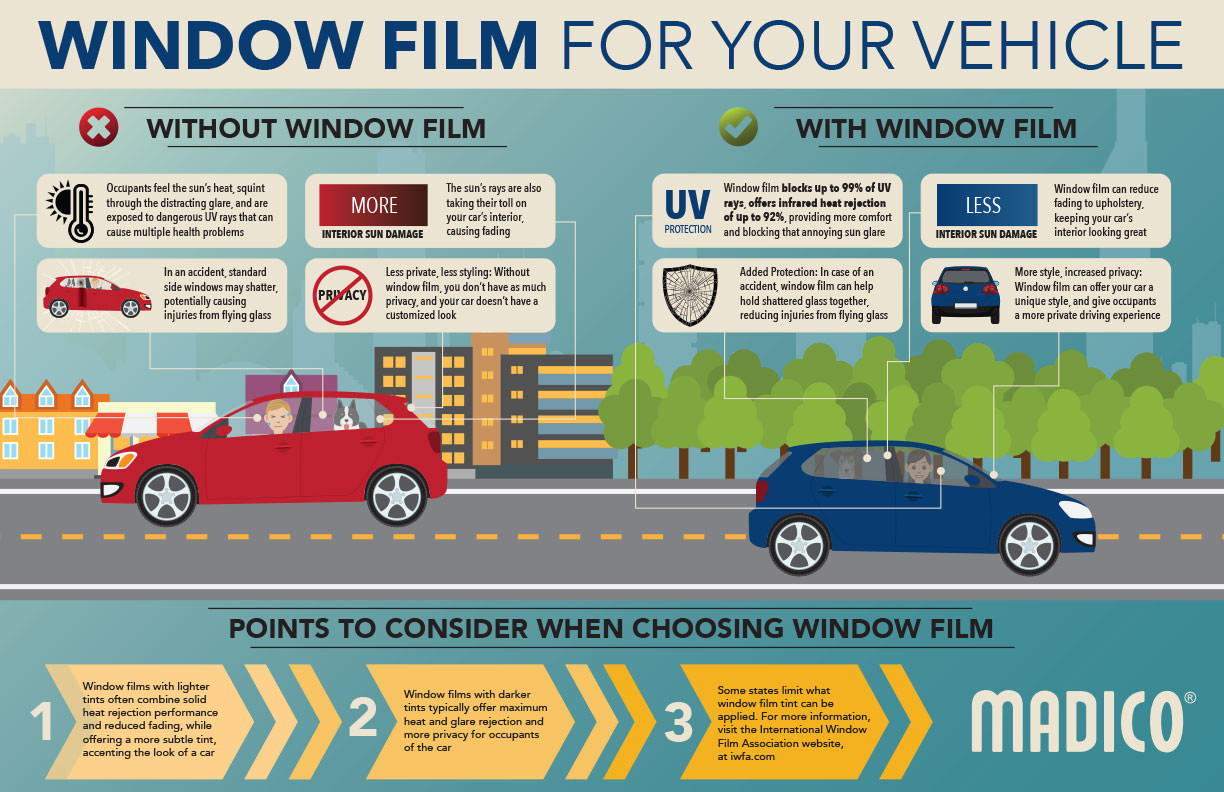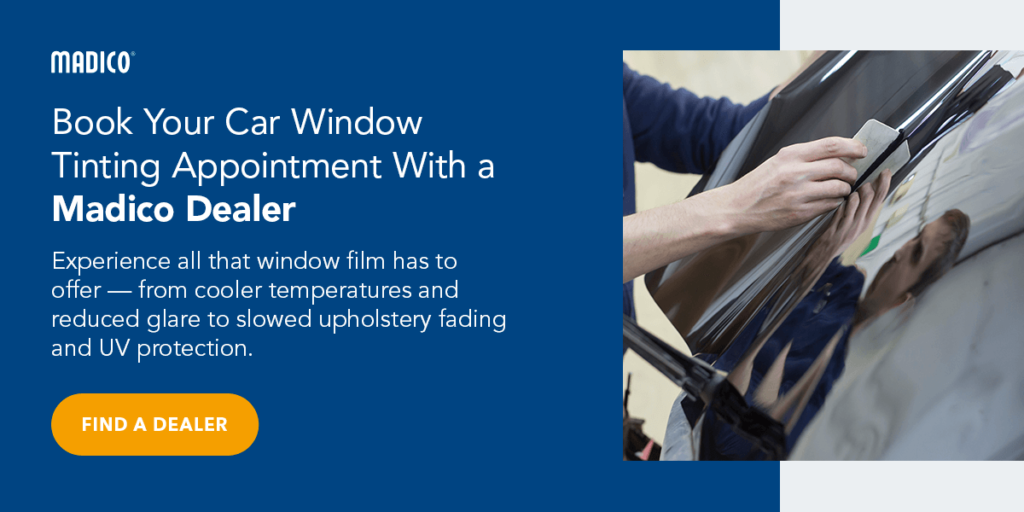Although factory-tinted glass and aftermarket tint may be similar in appearance, they’re very different in their materials, manufacturing procedures and installation processes. These differences give automotive window tinting film additional benefits that factory tint does not provide. Let’s talk more about the differences so you can decide which option is right for you or if you’d like an aftermarket auto tint on top of your factory tint.
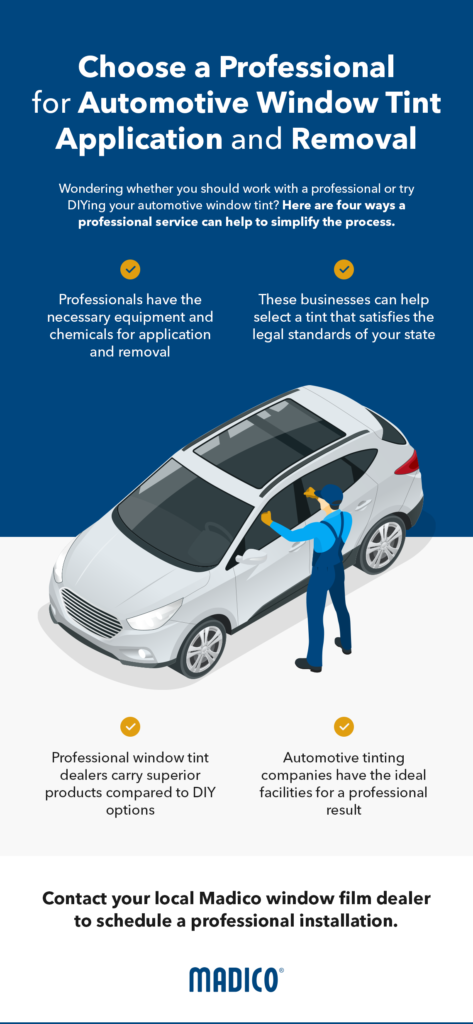
Materials and Manufacturing Processes
The two tints are made from different materials and have a very different manufacturing process.
Factory-tinted glass contains dyes and pigments that are mixed into the glass itself during manufacturing. These additives darken the glass color and prevent some visible light from passing through the windows.
Aftermarket window tint is a product applied to the window made from multiple layers of polyester film. This multilayer construction includes an adhesive coating, layers containing metal particles, dyes and pigments, and a final layer that provides scratch resistance. Different types and quantities of metals and dyes added to the internal layers impact the tint’s color, light transference and reflective properties of the film.
Aftermarket Tint Installation
Because the dyes and pigments are inside glass with factory tint, there are no installation procedures after the window is manufactured and installed in the vehicle. In contrast, aftermarket tinted film will be applied to the interior surface of the vehicle’s windows after the car has been manufactured and sold.
First, an automotive film professional cuts the tint to match the dimensions of the vehicle’s window openings. The interior side of the glass is cleaned to ensure the film will not trap any dirt or dust particles beneath it, and then the installer sprays solvents onto the glass. These solvents react with the adhesive coating on the film, allowing the installer to move the film into place before the adhesive cures.
Automotive Window Tint Removal
It is not possible to remove factory tint from a car window because the dyes and pigments are mixed inside the glass. Aftermarket tinting film can be removed from the glass by using tools to peel the film and solvents to break down the adhesive coating.
Professional Installations
Start Here
For best results, work with a window tinting professional when removing the film. Although tint installation and removal can sometimes be a project for advanced do-it-yourselfers, automotive tinting companies have the ideal facilities, equipment and chemicals for a professional result. These businesses also know and understand the laws for your state and will help you select a tint that meets your needs and satisfies the legal standards. Tinting films available for DIY applications are often inferior to the products available from professional tinting manufacturers like Madico®, Inc.
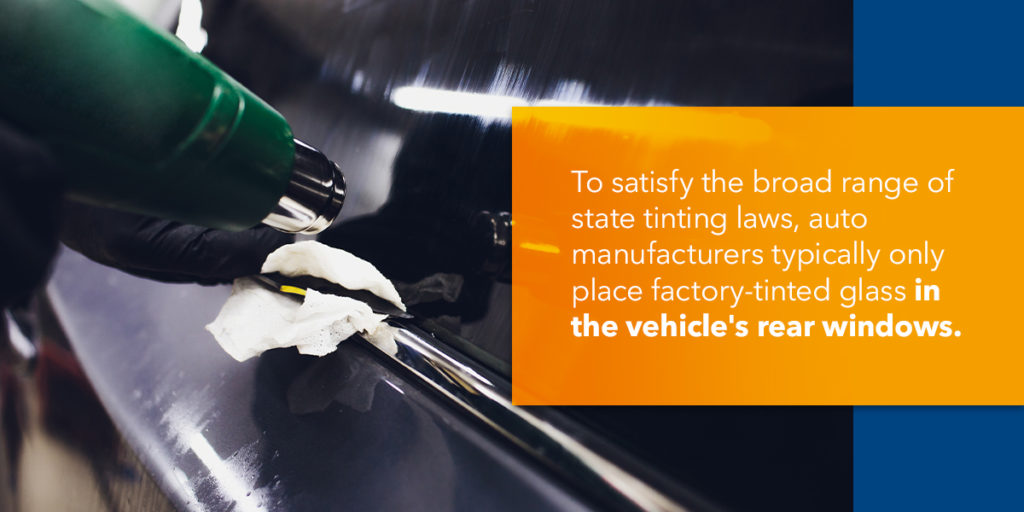
Protection From Ultraviolet Rays and Solar Energy
To satisfy the broad range of state tinting laws, auto manufacturers typically only place factory-tinted glass in the vehicle’s rear windows. While this tint filters visible light, it does not provide the same level of protection from ultraviolet rays as aftermarket tint.
Most Americans are unaware of the amount of UV light exposure they get while in their cars, especially because factory-tinted windows appear to let in less sunlight. Nearly 53% of skin cancers in American patients occur on the left side of the body — the driver’s side. But factory-tinted windows are primarily for aesthetics, visual comfort and privacy.
While glass on its own can block most UVB rays — the solar energy responsible for sunburn — it cannot block UVA rays — the light responsible for skin tanning, skin aging and wrinkles. Both types of UV rays contribute to skin cancer, and factory-tinted glass does not provide broad-spectrum UV protection or keep your car’s interior cool. That’s why The Skin Cancer Foundation recommends Madico automotive window films to block UV rays and protect your skin.
Adding auto window tint film to your vehicle’s front and rear windows reduces the volume of harmful UV rays that enter the car. Most aftermarket tinted window films block 99% of the sun’s harmful UV rays. This protection creates a safer environment for riders and reduces sun damage and fading of the car’s upholstery and dash.
In states where tinted glass is not allowed on the windshield, a professional window tinting company can install an optically clear film such as ClearPlex® by Madico. This solution lets drivers achieve complete UV protection on all four sides of the vehicle.
Aftermarket film also reflects and absorbs the sun’s solar energy from infrared light. When the sun’s energy goes unchecked, the temperature inside a vehicle can drastically increase while the car sits idle in the sun. Factory-tinted glass does little to reduce heat gain inside the car, while aftermarket film reflects the infrared energy in sunlight.
Infrared protection from aftermarket tinting maintains a more comfortable temperature inside the car and can even let you turn down your air conditioning to save on gas. Dyed glass by itself cannot provide this added temperature control.
Shattered Glass Protection
Although factory-tinted glass is tempered and strengthened to increase durability, it provides little protection when the glass breaks. An accident may send pieces of broken glass flying into the vehicle. When you install aftermarket window film, the adhesive and protective polyester layers work to hold shattered glass in place, reducing the chances of bodily injury for passengers. Although factory tinted glass is tempered and strengthened to increase durability, it provides little protection when the glass breaks. Typically resulting in pieces of broken glass flying into the vehicle during an accident or break-in. On the other hand, the adhesive and protective layers of aftermarket window film work to hold broken glass in place, reducing the chances of bodily injury for passengers.
Choose Madico for Your Aftermarket Window Tint
Madico window films feature the highest-quality laminates, adhesives and color-stable dyes. They are covered under our manufacturer’s warranty in North America for as long as you own your vehicle. Our products are guaranteed not to fade, crack, bubble or yellow while under warranty.
We let you achieve a darker tint than your factory tinting, with attractive colors like Charcool by Madico and Black Pearl by Madico. You’ll gain the aesthetic qualities and enhanced privacy of darkened windows while complying with your state’s automotive tinting laws.
Our auto window tints also offer additional protection from heat gain, retain shattered glass, slow interior fading and reduce glare. Plus, they come with The Skin Cancer Foundation’s Seal of Recommendation for UV protection you can trust. If you choose one of our spectrally selective nano-ceramic car window tints, you’ll gain advanced infrared protection that keeps your car cool.
Browse our selection of automotive window tints and contact your nearest Madico dealer for more information or to upgrade your window tint today.


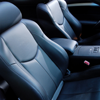 Your car is a valuable asset that you want to last as long as possible. Having window tinting
Your car is a valuable asset that you want to last as long as possible. Having window tinting 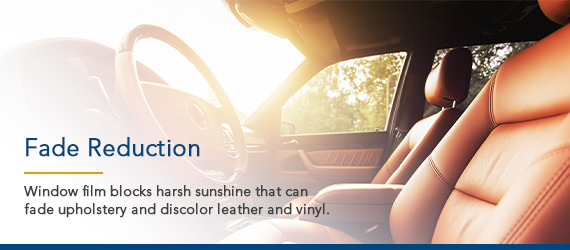
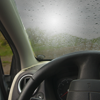 Car window tinting can block up to 99% of the sun’s harmful ultraviolet rays that can accelerate skin aging and
Car window tinting can block up to 99% of the sun’s harmful ultraviolet rays that can accelerate skin aging and 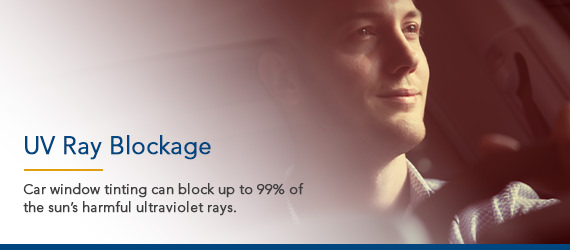
 If you’ve battled finding the right level of air conditioning for all of your passengers, window tinting can help resolve that dilemma. Depending on the grade,
If you’ve battled finding the right level of air conditioning for all of your passengers, window tinting can help resolve that dilemma. Depending on the grade, 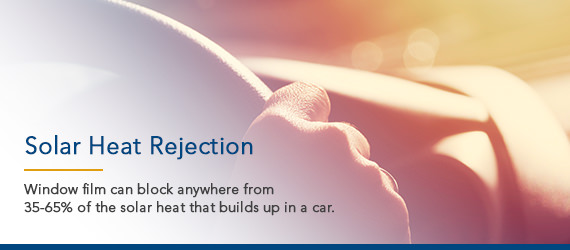
 The
The 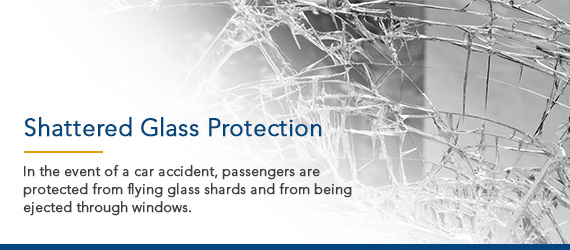
 Window tinting comes in a wide range of shading, from car blackout window film to lighter shades, to provide a level of privacy for you and your passengers as you go down the road. When you park the car, you can walk away and know that prying eyes cannot see your valuables inside.
Window tinting comes in a wide range of shading, from car blackout window film to lighter shades, to provide a level of privacy for you and your passengers as you go down the road. When you park the car, you can walk away and know that prying eyes cannot see your valuables inside.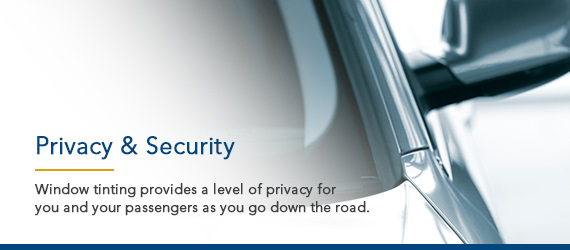
 You may want to start with the window film and then choose your installer, because different installers carry different types of window film. Window film that blocks damaging UV rays is a popular choice and it can actually
You may want to start with the window film and then choose your installer, because different installers carry different types of window film. Window film that blocks damaging UV rays is a popular choice and it can actually  Like choosing any business, one of the best ways to make your decision is by asking others who they recommend. You can also view online referrals and rankings on various sites. Once you’ve identified some credible options, ask the installer how long he or she has been in business at their current location. The longer the better as longevity is a sign that they offer good quality and service at fair prices. You’ll also want to see samples of their work. This article has
Like choosing any business, one of the best ways to make your decision is by asking others who they recommend. You can also view online referrals and rankings on various sites. Once you’ve identified some credible options, ask the installer how long he or she has been in business at their current location. The longer the better as longevity is a sign that they offer good quality and service at fair prices. You’ll also want to see samples of their work. This article has  You may be tempted to save some money and try a do-it-yourself kit, but there are several reasons why it’s smart to go with a professional window tinting company.
You may be tempted to save some money and try a do-it-yourself kit, but there are several reasons why it’s smart to go with a professional window tinting company. 